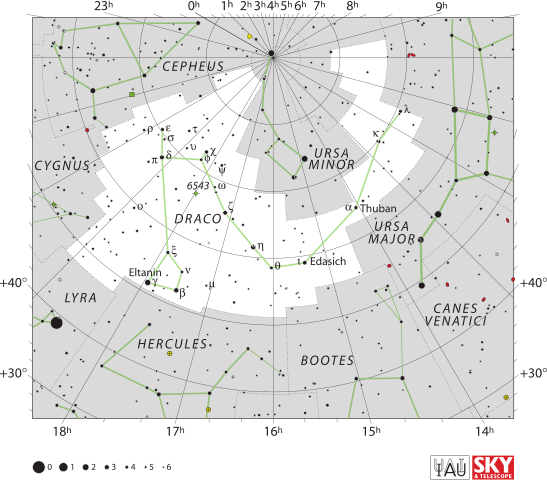- Draco is a constellation in the far northern sky. Its name is Latin for dragon. It was one of the 48 constellations listed by the 2nd century astronomer Ptolemy, and remains one of the 88 modern constellations today. The north pole of the ecliptic is in Draco. Draco is circumpolar from northern latitudes. There it is never setting and therefore can be seen all year.
